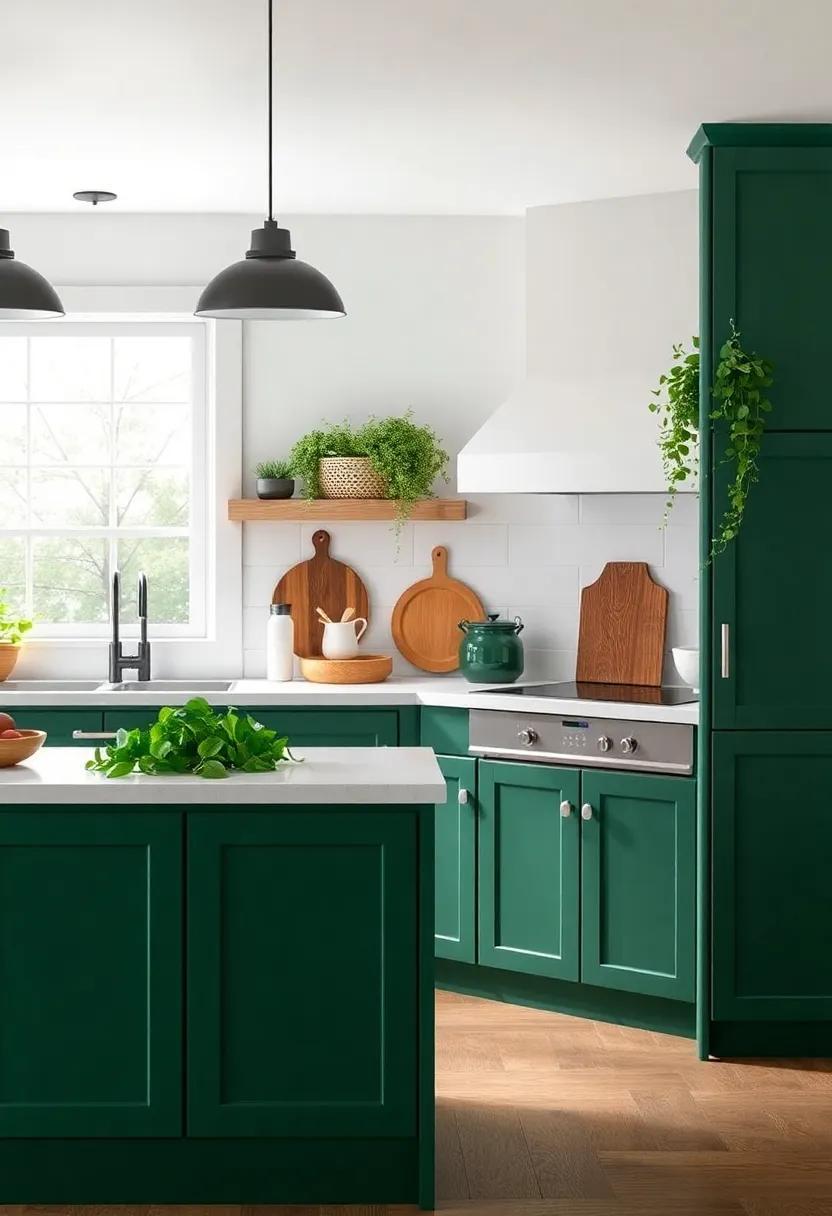In a world increasingly captivated by the hustle adn bustle of modern life, the farmhouse kitchen remains a beloved sanctuary where tradition meets warmth. But what if this cozy haven coudl transcend its rustic charm and evolve into a vibrant tribute to nature? “” invites you to explore the enchanting possibilities of integrating verdant companions into your culinary space. From fragrant herbs that dance in the sunlight to cascading vines that breathe life into the walls, this guide will illuminate how to harmonize your kitchen with the beauty of the outdoors. Discover the transformative power of greenery and learn how these living elements can infuse your home with freshness,serenity,and a touch of the wild—all while maintaining the timeless elegance of farmhouse style.
Embracing Lush Greenery in Your Farmhouse Kitchen
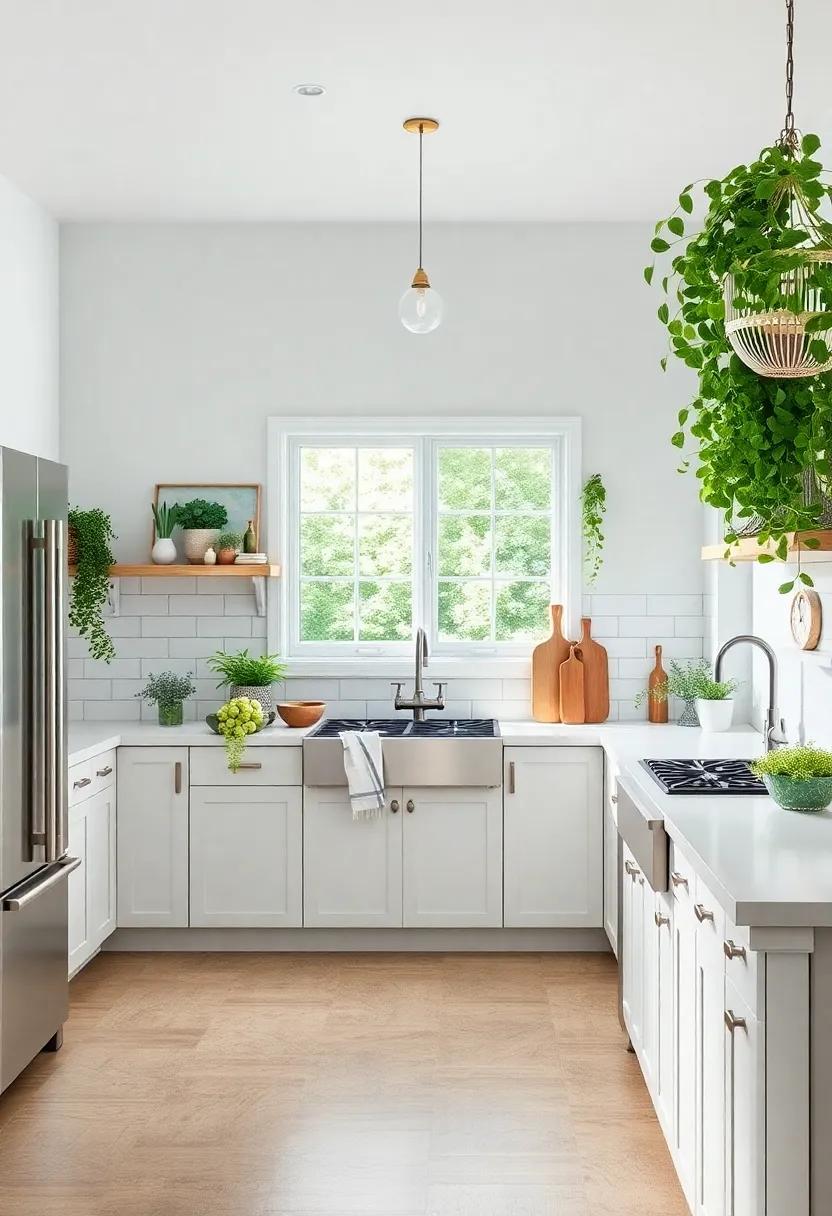
Infusing your farmhouse kitchen with lush greenery not only enhances the aesthetic appeal but also brings a sense of tranquility and warmth to the space. Consider adding a variety of plants that thrive in kitchen environments, such as herbs, succulents, and even small fruit-bearing plants. Herbs like basil, rosemary, and mint can be conveniently placed on windowsills or hanging planters, creating a functional and fresh atmosphere. opt for decorative pots that align with your farmhouse decor to seamlessly integrate these living elements into your kitchen’s overall design.
Moreover, choosing a mix of plants can create visual interest and vibrant pops of color throughout your kitchen. try incorporating elements such as:
- Vertical gardens: Maximize wall space by using vertical planters that allow more greenery without taking up counter space.
- Open shelving: Use open shelves to display potted plants, mixing them with your dishware for a natural look.
- Statement pieces: Consider a larger floor plant, like a fiddle leaf fig or palm, to draw the eye and add a dramatic flair.
These choices not only beautify your kitchen but also enhance your cooking experience by providing fresh ingredients at your fingertips. Embrace the beauty of nature and transform your kitchen into a serene,green sanctuary where you can enjoy both culinary creations and the vibrant life that plants bring.
Inviting Natural Light: The Heart of a Green kitchen Space
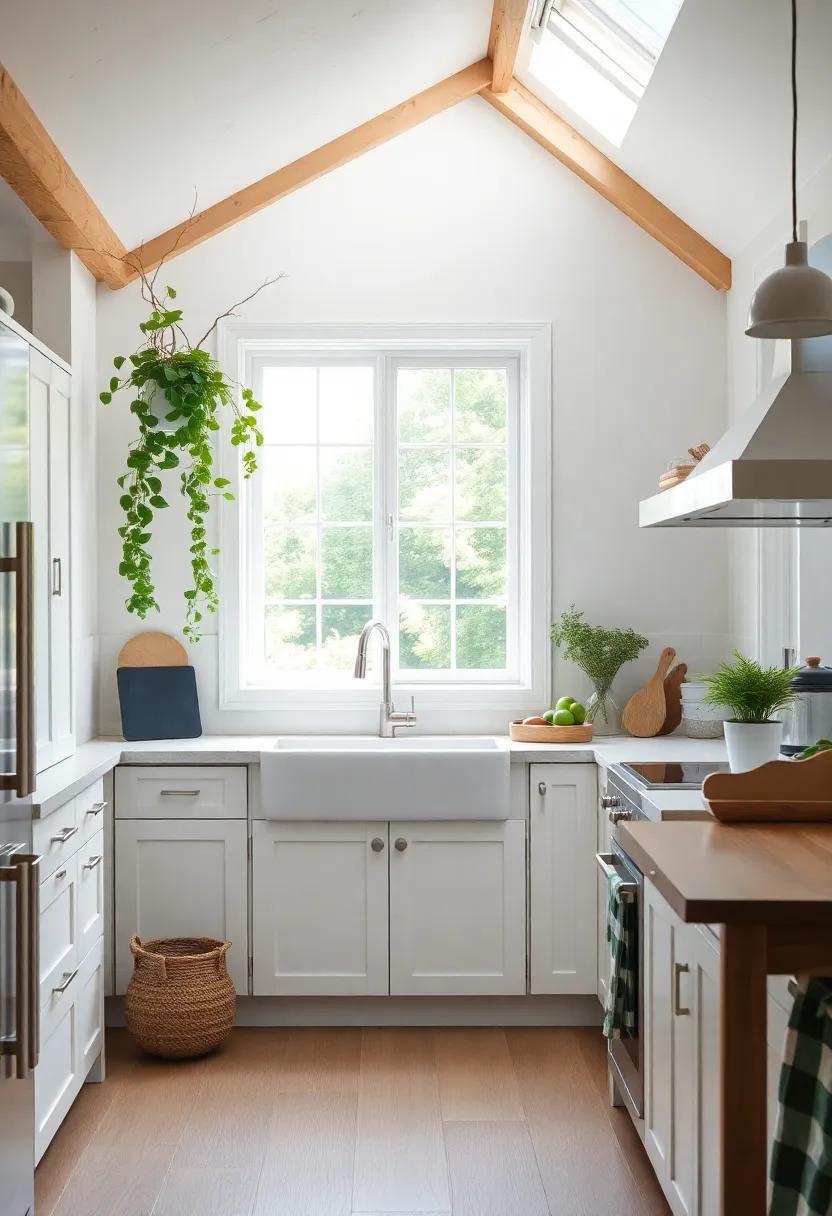
When designing a kitchen that harmonizes with nature, prioritizing natural light can considerably elevate the space. Large windows or glass doors allow the sunlight to flood in,creating a warm and inviting atmosphere. Consider incorporating translucent or sheer window treatments that maintain privacy while maximizing brightness. To enhance the connection with the outdoors,position your kitchen near a garden or backyard,ensuring that every meal prep is accompanied by the beauty of greenery just outside your windows.
Incorporating reflective surfaces can also help in amplifying the natural light, making your kitchen feel more expansive and airy. A mix of materials such as light wood cabinetry,polished stone countertops,and mirrored backsplashes can bounce around the sunlight. Depending on your style, you might choose to add indoor plants that thrive in shining light, offering both aesthetic appeal and improved air quality.Some popular choices include:
- Herbs: Basil,rosemary,and thyme
- Foliage: Ferns and pothos
- Succulents: Aloe and jade plant
Herb Gardens: The Perfect Addition to Your Culinary Haven

Transforming your culinary space into a lush oasis starts with adding a dedicated herb garden. Imagine stepping into your farmhouse kitchen and being greeted by the vibrant hues and fragrant aromas of fresh herbs. Not only do these tiny green wonders enhance the aesthetic of your kitchen, but they also offer an array of culinary benefits. by cultivating your own herbs, you can enrich your dishes with flavors that store-bought options simply can’t match. The satisfaction of plucking a basil leaf or snipping a sprig of thyme, right when you need it, revitalizes your cooking experience and invites a true farm-to-table ethos into your home.
When designing your herb garden, consider the diverse options available and their distinct uses. Here are some must-have herbs for any culinary enthusiast:
- Basil: Perfect for Italian dishes and refreshing salads.
- Parsley: A versatile garnish and flavor enhancer for many recipes.
- Rosemary: Adds a woodsy flavor, great for roasting meats and vegetables.
- Mint: Ideal for desserts and cocktails, providing a refreshing twist.
- Cilantro: Essential in salsas and Asian cuisine.
Utilizing containers or dedicated garden beds based on your available space can further enhance the accessibility of your herbs. explore ways to integrate vertical gardens or hanging pots, especially in smaller kitchens.The personal touch of growing your own herbs not only elevates your cooking but also creates an inviting atmosphere, making your kitchen a nurturing hub for creativity and taste.
Incorporating Vertical Gardens for Space-Saving Beauty

Transforming your farmhouse kitchen with lush greenery becomes an exciting endeavor when you incorporate vertical gardens into your design. These innovative green spaces not only elevate your kitchen’s aesthetic but also offer a practical solution for limited space. By utilizing wall-mounted planters or trellises, you can create a stunning focal point filled with a variety of plants, including herbs, succulents, and vibrant flowers. This approach allows you to enjoy the beauty of nature while maximizing your available vertical space.Consider these benefits:
- Maximized Space: Vertical gardens make the most of your walls, freeing up countertops and floors for other uses.
- Improved Air Quality: Plants help to purify the air, creating a healthier kitchen environment.
- Aesthetic Appeal: A living wall adds color and texture, enhancing the rustic charm of a farmhouse kitchen.
For those who are concerned about maintenance, modern vertical garden systems come equipped with self-watering features, making it easier than ever to nurture your green companions. While selecting plants, it’s essential to consider both the sunlight available in your kitchen and the water needs of each plant. Of course, a well-planned arrangement will not only look stunning but also provide culinary ingredients right at your fingertips. Here’s a simple table to help you choose the perfect plants:
| Plant | Sunlight needs | Watering frequency |
|---|---|---|
| Basil | Full Sun | Weekly |
| Mint | Partial Shade | Every 4-5 days |
| Succulents | Bright, Indirect Light | Every 2 weeks |
The Refreshing Aroma of Fresh Herbs in Your Cooking
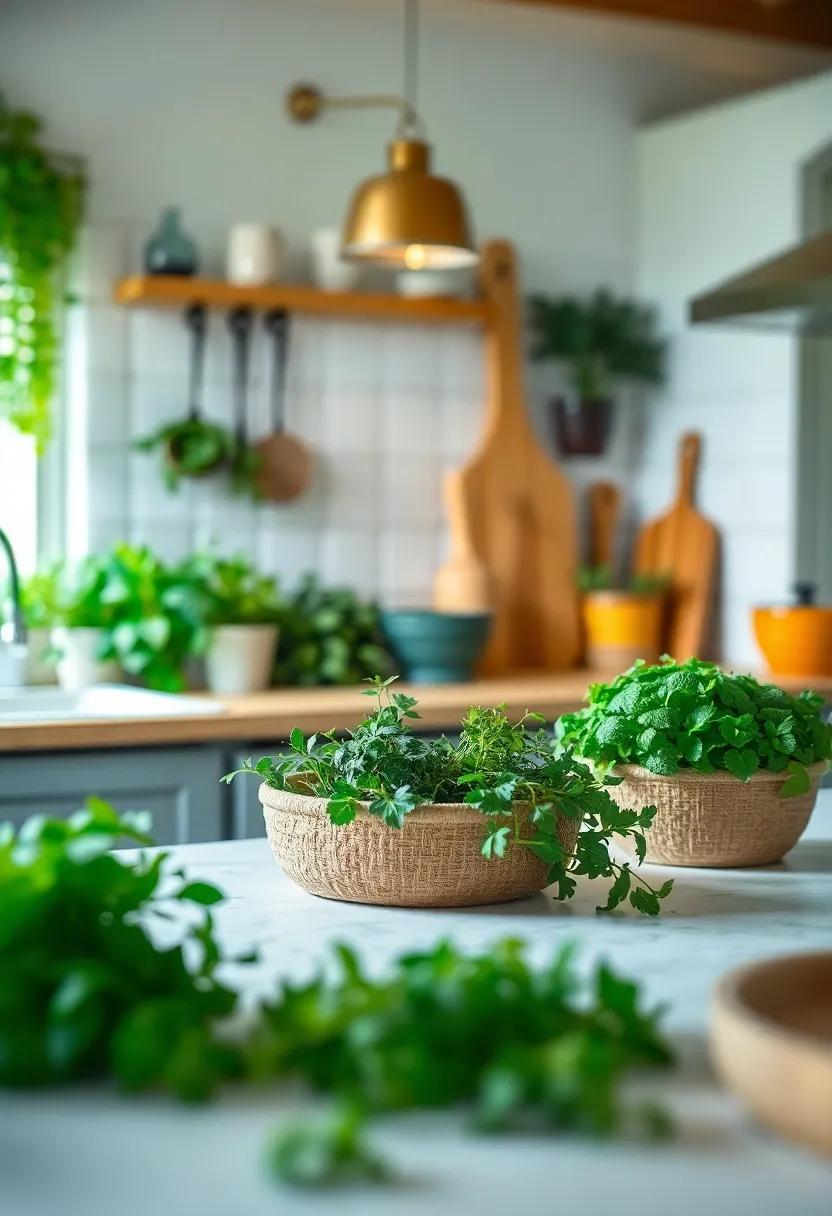
Imagine stepping into your farmhouse kitchen, where the air is filled with the delightful scent of freshly snipped herbs. Incorporating these vibrant greens not only elevates your cooking but also creates an inviting atmosphere that connects you to nature. whether it’s the robust aroma of basil, the refreshing notes of mint, or the earthy scent of rosemary, the influence of fresh herbs can transform even the simplest dish into a culinary masterpiece. The experience of using them is as much about the senses—both taste and smell—as it is about nourishment.
To fully embrace this aromatic journey, consider creating a dedicated herb corner in your kitchen. A small, stylish planter or a rustic wooden shelf can house a variety of herbs.Here are some great choices to get you started:
- Basil: Perfect for salads and pasta.
- Cilantro: Adds brightness to salsas and curries.
- Parsley: A versatile garnish for any dish.
- Thyme: Fantastic for roasting meats and vegetables.
- Chives: Perfect for toppings and enhancing flavors.
The ongoing care for these herbs only deepens your connection to your kitchen environment. Their vibrant green hues serve as a reminder of the bounty of the earth, inspiring a return to traditional cooking methods and a greater appreciation for the meals prepared with love.
Textures of Nature: using Wood and Stone Elements
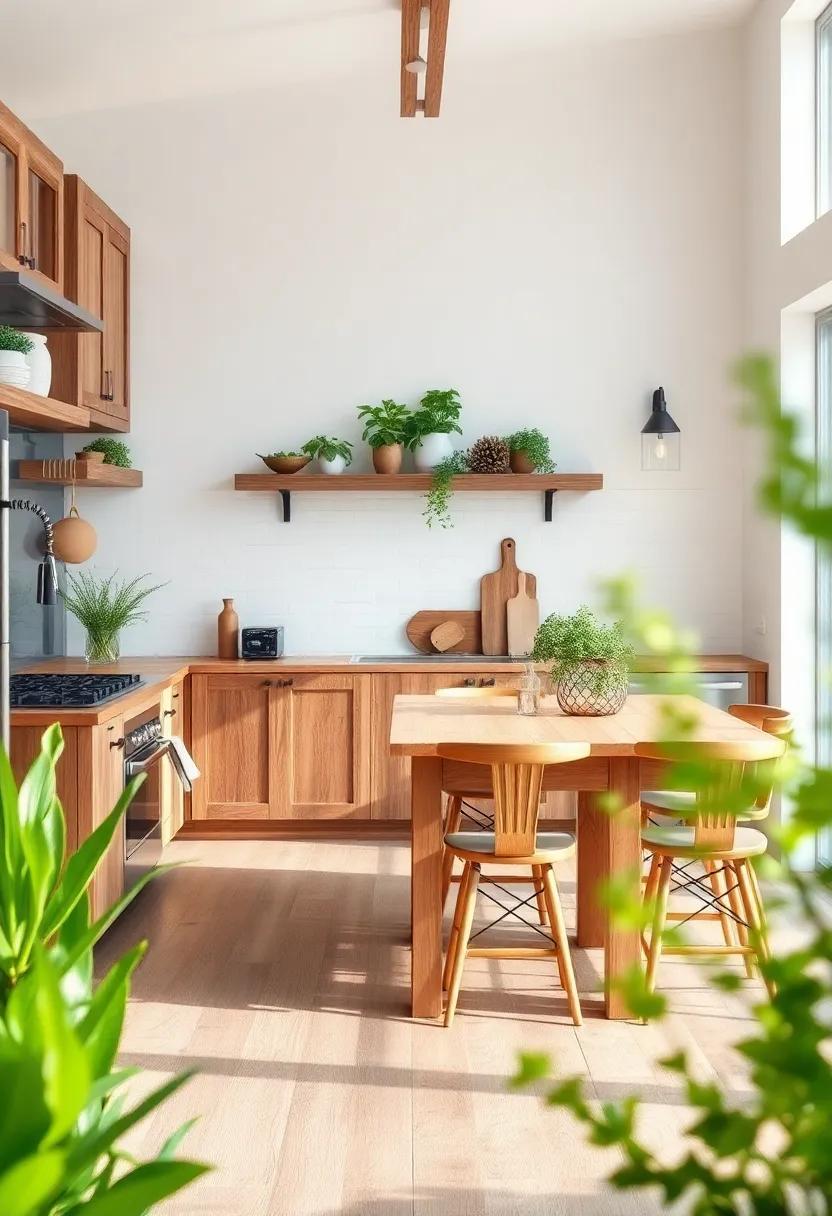
Incorporating wood and stone elements into your farmhouse kitchen can beautifully enhance the natural ambience of the space. Wood, with its warm tones and intricate grain patterns, evokes a sense of comfort and homeliness. Consider features such as reclaimed wooden beams overhead or rustic cabinetry crafted from oak or pine. accent the richness of wood with stone surfaces that present a rugged yet elegant flair. Materials like granite or marble for countertops can provide durability while introducing a touch of sophistication, complementing the organic feel of your kitchen.
To further solidify the connection to nature,you can introduce specific design elements that harmonize with your chosen materials. Here are some ideas:
- Natural finishes: Opt for matte or satin finishes on wood to retain the essence of the material.
- Textured stone backsplashes: Create visual interest with uneven stonework behind the stove or sink.
- Live edge slabs: Use a slice of raw wood for shelving or as a serving board to keep the organic appeal alive.
Creating a Green Oasis with Potted Plants and Vines
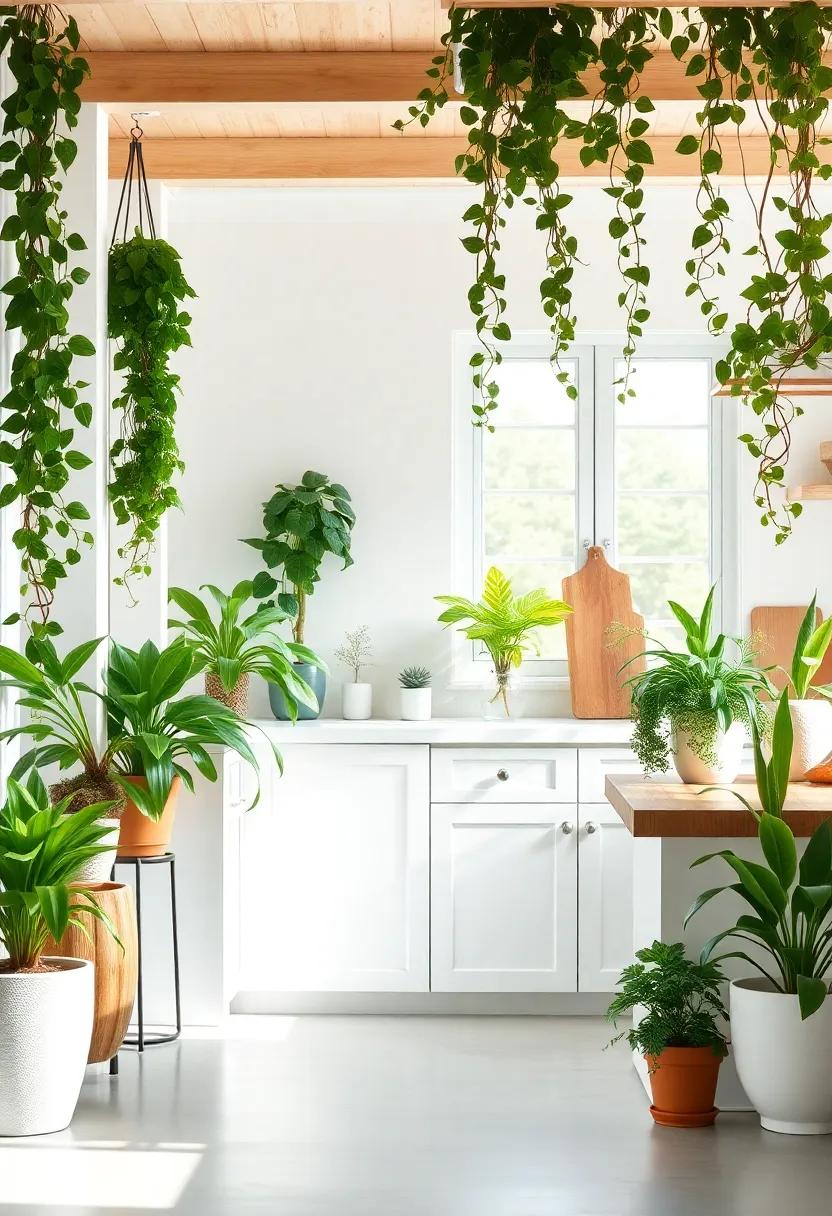
Transform your farmhouse kitchen into a serene sanctuary by incorporating an array of potted plants and cascading vines. These natural accents not only bring a touch of the outdoors in, but they also promote a sense of tranquility and well-being. Consider using a mix of herbs, succulents, and elegant trailing vines to create visual interest. Some great choices include:
- Basil – perfect for culinary use and adds a fresh aroma.
- Spider plant – a hardy choice that purifies the air.
- String of Hearts – adds a whimsical touch with its delicate leaves.
- Pothos – a versatile vine that thrives in varying light conditions.
To maximize your space, consider using decorative shelves or hanging planters, which let you play with height and composition. A well-placed table can also serve as the perfect stage for your botanical arrangement. Below is a simple guide to help you choose the right plant based on the lighting in your kitchen:
| Light Conditions | Best plants |
|---|---|
| Low Light | Snake plant, ZZ Plant |
| Medium Light | Pothos, Peace Lily |
| Bright Indirect Light | Herbs, Spider Plant |
Natural Accents: Integrating Earthy Colors into Decor
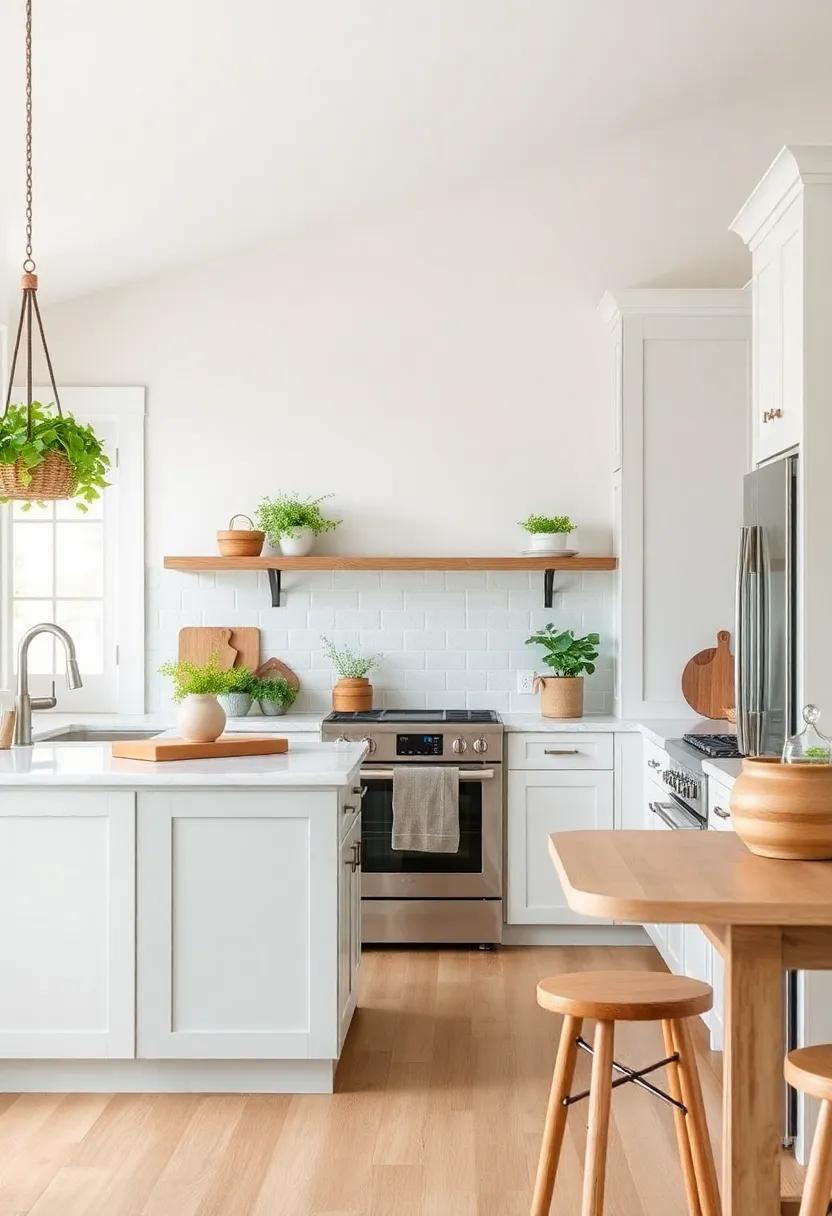
To create a seamless and inviting atmosphere in your farmhouse kitchen, consider incorporating a palette inspired by nature.Start by selecting earthy tones such as sage green,terracotta,and soft taupe for your cabinetry and walls.These colors evoke a sense of tranquility and warmth, mimicking the soothing hues found in nature.Accentuate these base colors with decorative elements—think of woven baskets, wooden utensils, and stoneware dishes that harmonize beautifully with the organic aesthetic. Adding a few plants, like herbs or succulents, can further enhance the earthy vibe, infusing your space with life and color.
Consider using a mix of textures to elevate your decor. For instance, pair smooth ceramic dishes with rough-hewn wooden shelves. This contrast not only adds visual interest but also creates a more inviting environment for both cooking and socializing. To keep your design cohesive, incorporate a color-blocking approach for your textiles—use table linens in warm, muted shades and layer them with patterned throws that feature subtle earth tones. Below is a simple table to showcase some perfect color combinations to inspire your decorating ideas:
| color Combination | Texture Ideas |
|---|---|
| Sage Green & Terracotta | Ceramic pots, linen tablecloths |
| Soft Taupe & dusty Blue | Wooden cutting boards, cotton napkins |
| Muted Olive & Cream | Brushed metal accents, woven baskets |
Sunlit Windowsills: Ideal Spots for Your Greenery
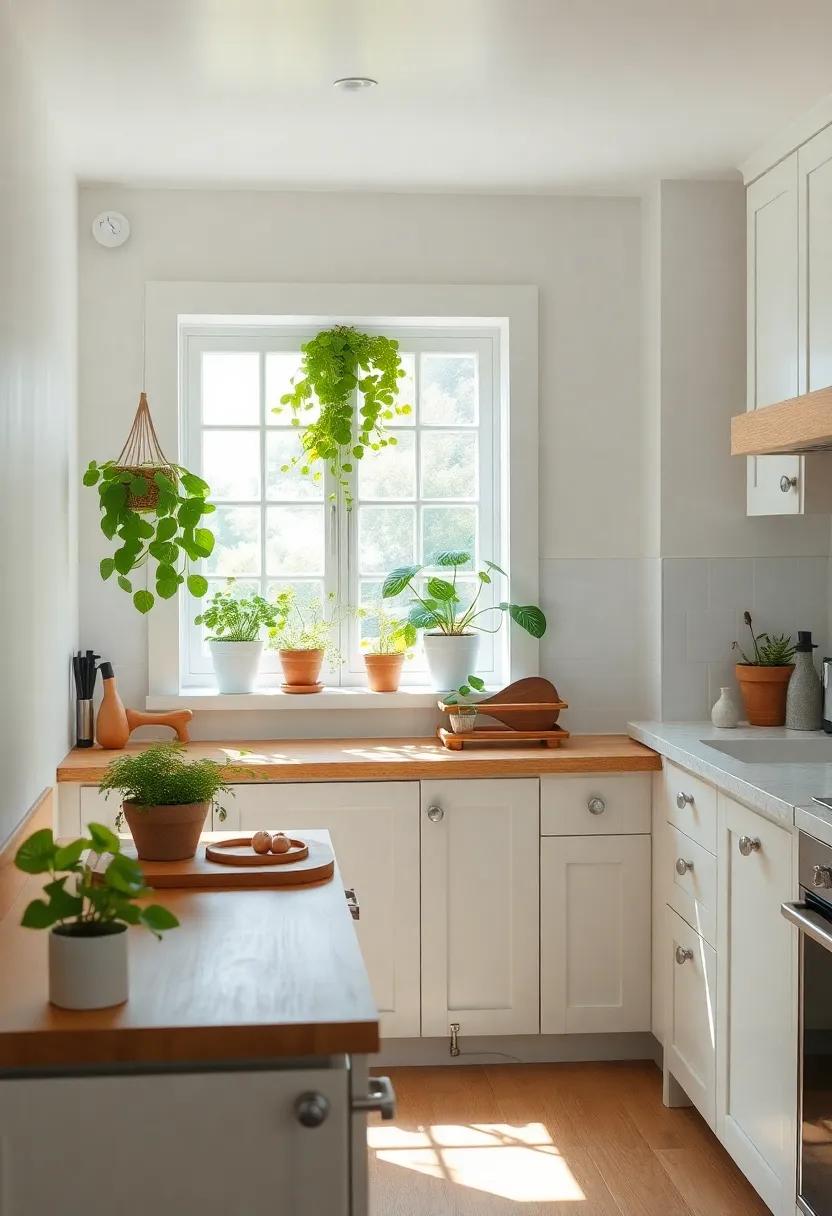
When it comes to nurturing your indoor oasis, sunlit windowsills are the unsung heroes of your farmhouse kitchen. These naturally lit spaces not only offer warmth and brightness but also provide the perfect environment for a variety of plants to thrive. Consider bringing in herb selections that are both functional and fragrant, such as:
- Basil – Great for cooking, its aroma enhances your kitchen ambiance.
- Rosemary – A hardy herb that adds a rustic charm.
- Thyme – Compact and easy to maintain, perfect for limited window space.
moreover, you can experiment with other vibrant options to create a livelier atmosphere. Succulents,for instance,require minimal maintenance and can thrive in high sunlight without frequent watering. A mix of varying sizes can create a beautiful visual appeal. To help you plan your window garden, consider the following:
| Plant Type | Sunlight Requirement | Care Level |
|---|---|---|
| Succulents | Direct Sunlight | Low |
| Herbs | Indirect to Direct sunlight | Moderate |
| Flowering Plants | Indirect Sunlight | Varies |
Seasonal Blooms: Adding Life and Color Throughout the Year
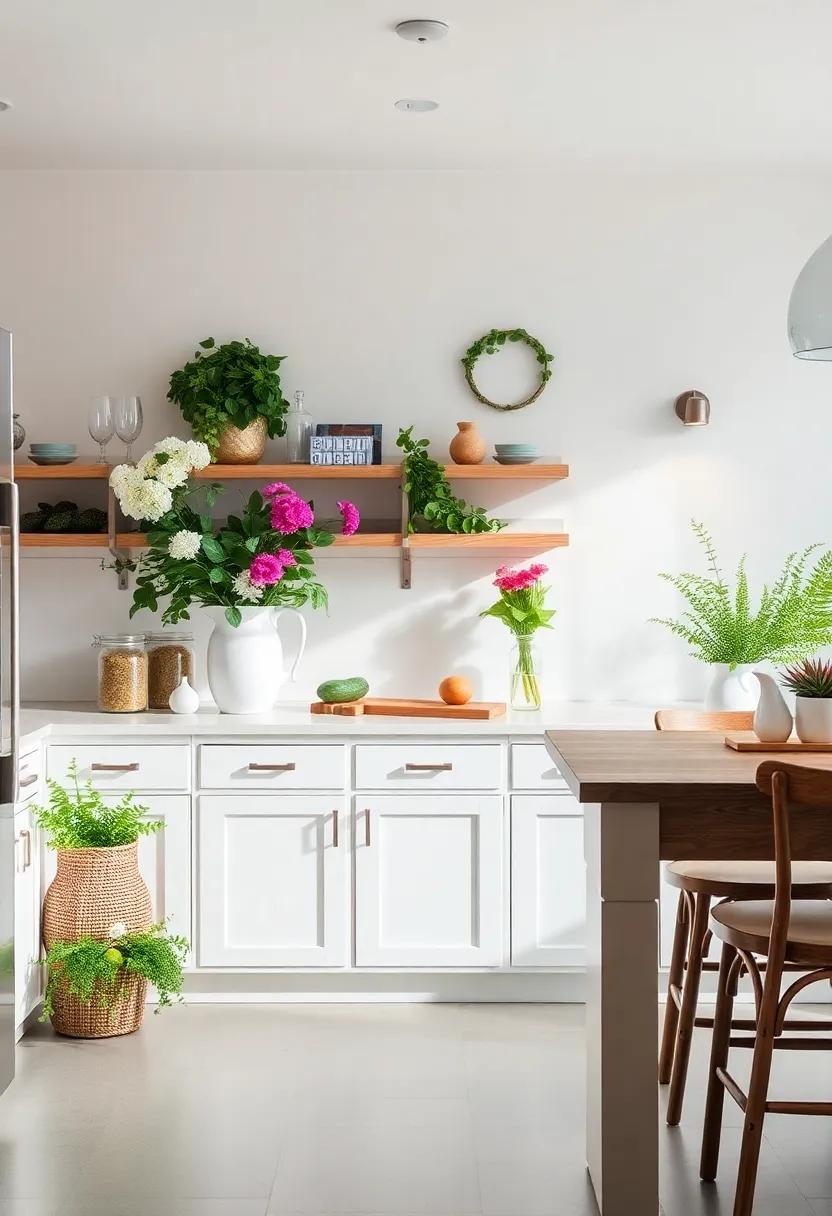
Incorporating seasonal blooms into your farmhouse kitchen can create a vibrant atmosphere that evolves with the changing seasons. Imagine the beauty of daffodils and tulips ushering in spring, their bright colors complementing the warm, rustic tones of your kitchen. As summer approaches, vibrant zinnias, sunflowers, and the enchanting rose take center stage, filling your space with life and fragrance.With fall comes the warm hues of chrysanthemums and marigolds, adding rich shades of orange, yellow, and burgundy that echo the changing leaves outside. Even in winter, poinsettias or clusters of bright red narcissus can brighten the room, ensuring that your kitchen remains a lively haven year-round.
To ensure your blooms stay fresh and vibrant, consider creating a flower rotation schedule that matches seasonal availability. Here are some tips to help you effectively curate your floral displays:
- local Sourcing: select flowers that are in season and grown locally to ensure freshness.
- color Coordination: Choose blooms that complement your kitchen’s color scheme to maintain harmony.
- Vase Variety: Mix and match vases for an eclectic touch that showcases different arrangements.
- care Techniques: regularly trim stems and change water to prolong the life of your flowers.
Evolving with Nature: Adapting to Seasonal Changes
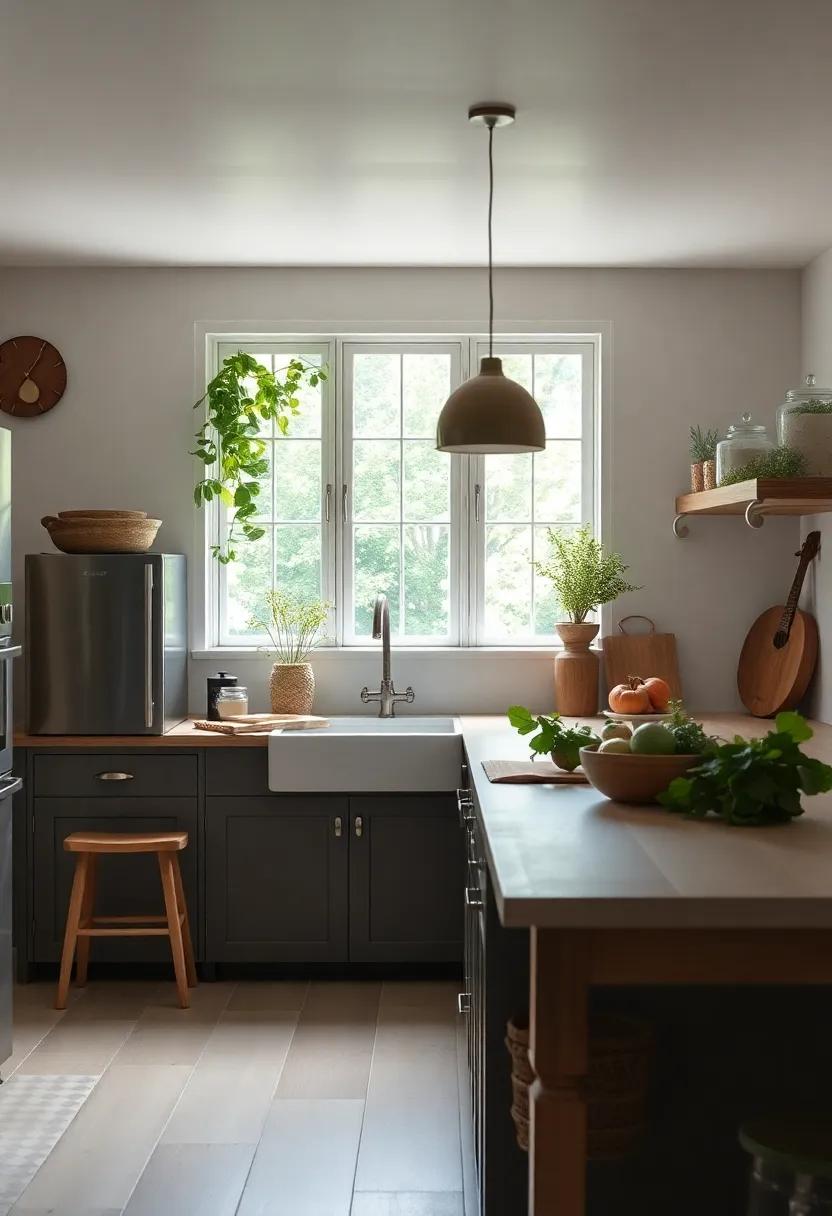
As the seasons shift, so to can your farmhouse kitchen. Infusing your space with seasonal greenery can enhance the ambiance and vibrancy of your home. Consider incorporating everchanging floral arrangements and herb gardens that resonate with the time of year. In spring, display bright tulips and daffodils in rustic vases; during summer, choose sunflowers and vibrant greenery that mirror the lush outdoors. Autumn brings a warm palette of chrysanthemums and pumpkins, while winter can be brightened with evergreen branches and holly, providing a sense of cheer during the colder months.
To easily adapt your kitchen decor to these seasonal shifts, think about creating a rotation plan for your plants and decorations. Here’s a simple table to inspire your transitions throughout the year:
| Season | Suggested Plants | Decor Tip |
|---|---|---|
| Spring | Tulips, Daffodils, herbs (Basil, Mint) | Bright vases & fresh herb pots on windowsills |
| summer | Sunflowers, Lavender, Sage | Colorful table runners with sunflower centerpieces |
| Autumn | Chrysanthemums, Asters, Pumpkin | Warm, earthy tones through table decor |
| Winter | Evergreens, Poinsettias, Holly | Cozy accents with twinkling fairy lights |
By embracing these natural elements, your kitchen not only transforms with the seasons but also fosters a deeper connection with the ever-changing environment. Create delightful spaces where seasonal herbs and flowers bring fresh scents and flavors, complementing your culinary experiences. With thoughtful attention to nature’s rhythm,your farmhouse kitchen can truly become a sanctuary of creativity and comfort.
Aromatherapy in the Kitchen: Plants with Invigorating scents
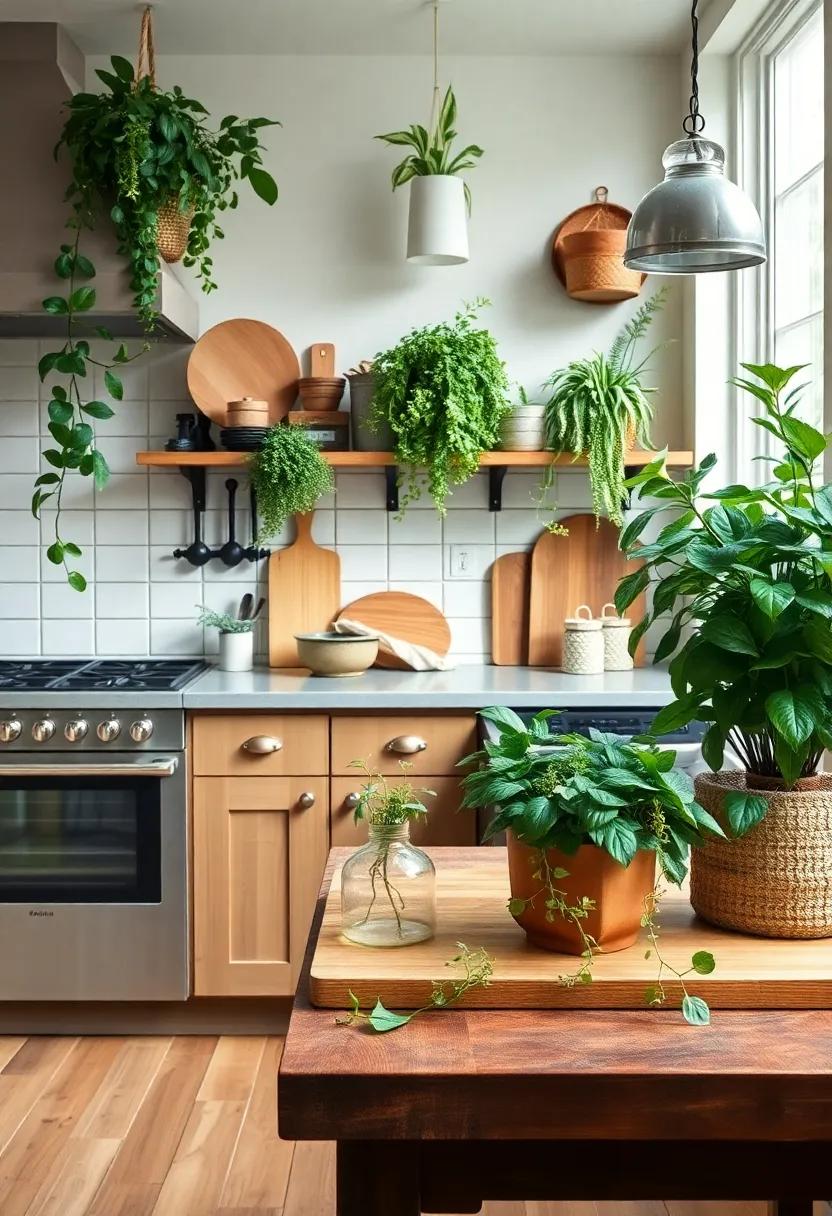
Immerse yourself in the symphony of scents that a well-planned kitchen garden can offer. Plants such as basil, mint, and rosemary not only enhance your culinary creations but also uplift your mood with their invigorating aromas. Engaging your senses, these herbs infuse your cooking space with a refreshing fragrance that can transform even the most mundane tasks into a sensory delight. consider placing pots of citrus-scented geraniums or lemongrass near your kitchen window; their uplifting scents can energize your cooking routine and refresh your spirit throughout the day.
To create a cohesive aromatic experience, you might also want to explore the delightful fragrances of certain flowers. Lavender and jasmine are excellent choices that provide calming yet invigorating scents, creating a serene atmosphere conducive to creativity in the kitchen. Pairing these plants can heighten the sensory engagement you experience while cooking. Below is a simple table highlighting some of these invigorating plants and their distinctive scents:
| Plant | Aroma Profile | benefits |
|---|---|---|
| Basil | Spicy and sweet | Enhances digestion, boosts mood |
| Mint | Cool and refreshing | Increases focus, relieves stress |
| Rosemary | Pine-like and herbaceous | Stimulates memory, uplifting |
| Lavender | Floral and calming | Promotes relaxation, eases anxiety |
Nostalgic Farmhouse Styles Reimagined with Green Touches

Revitalize your farmhouse kitchen with an infusion of greenery that not only celebrates a rustic charm but also nurtures a connection to nature. Imagine your countertop adorned with vibrant herbs like basil, rosemary, and thyme, bringing both fragrance and flavors that elevate your culinary adventures. Accentuate this green palette with thoughtfully placed indoor plants, such as pothos or peace lilies, that complement the warm wooden elements of a farmhouse style while purifying the air and enhancing well-being.
To incorporate green touches seamlessly, consider using vintage-style terracotta pots or reclaimed wooden trays as plant holders. Pair these with a soothing, earthy color scheme for your kitchen accessories, which can include green aprons, linen napkins, and even hand-painted ceramic dishware. Embrace the fusion of nostalgia and nature by integrating the following elements into your kitchen design:
- Hanging Herb Gardens: use wall-mounted planters to create a living wall.
- Natural Textures: Incorporate jute or burlap for table runners and curtains.
- Green Accents: Add cushions or throws in soft green hues for a cozy touch.
Sustainable Practices: Growing Your own Kitchen Herbs
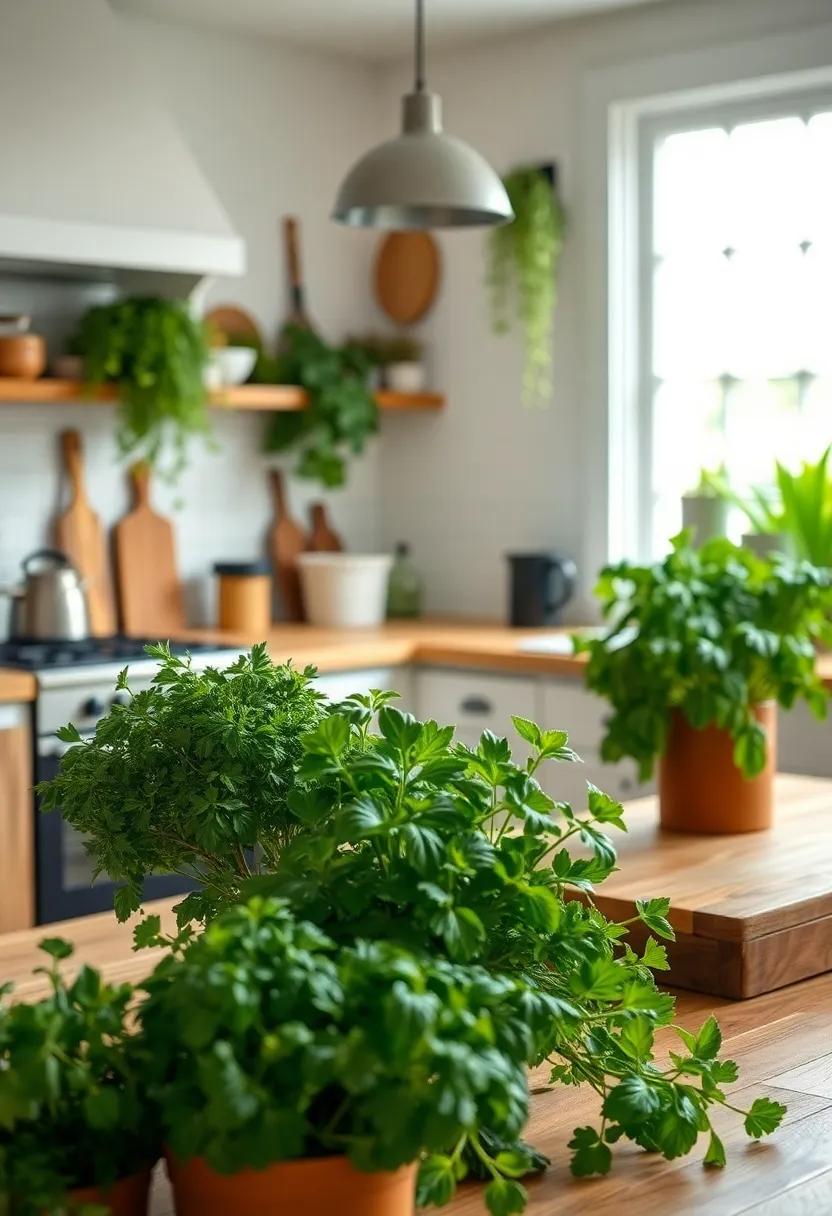
Bringing the freshness of nature into your kitchen has never been more rewarding. Growing your own herbs not only enhances your culinary creations but also enriches your farmhouse ambiance with vibrant greenery.Start by selecting a few versatile herbs that thrive indoors or in a sunny spot on your porch.Consider planting basil, rosemary, thyme, and parsley for a delightful blend that complements a variety of dishes. The minimal care these herbs require makes them ideal for both seasoned gardeners and casual enthusiasts alike.
Below are some key benefits of cultivating your own kitchen herbs:
- Freshness: Enjoy the unparalleled taste of freshly picked herbs.
- Convenience: have culinary essentials within arm’s reach, ready to liven up any meal.
- cost-effective: Save money by reducing your reliance on store-bought herbs, which can be pricey.
- Environmental Impact: Contribute positively to the environment by reducing packaging waste.
| Herb | Sunlight Requirement | Watering Frequency |
|---|---|---|
| Basil | 6-8 hours daily | Once a week |
| Rosemary | 6-8 hours daily | once every 2 weeks |
| Thyme | 6-8 hours daily | Once every 2 weeks |
| Parsley | 4-6 hours daily | Once a week |
Crafting a Cozy Corner with Nature-Inspired Decor
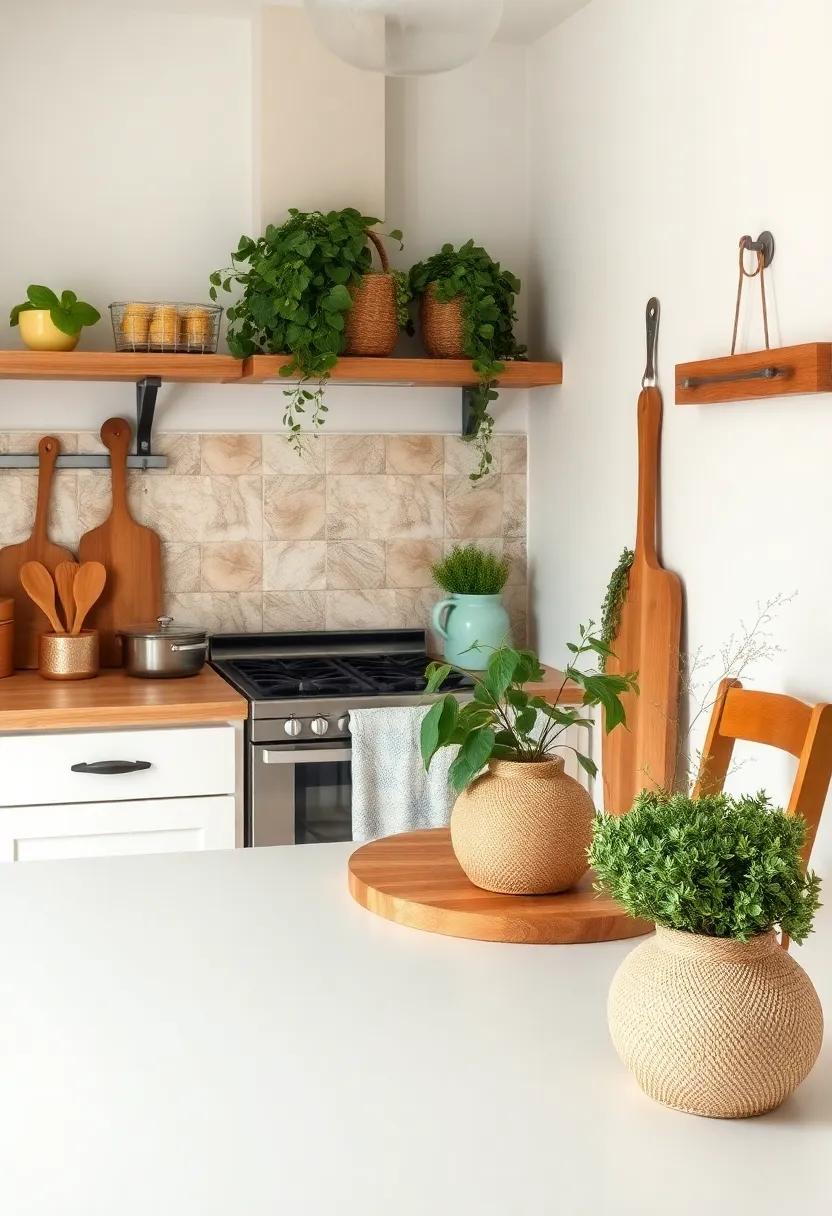
Creating a nook that embraces the tranquility of nature is all about integrating organic elements into your farmhouse kitchen. Start by incorporating natural materials—think of wooden shelves, wicker baskets, and stone accents that bring a rustic, earthy feel to the space. Add layers of greenery with potted herbs like basil,thyme,and rosemary placed on window sills or countertops,adding both beauty and functionality.You can also hang terrariums or wall-mounted planters featuring variegated plants to introduce liveliness while saving counter space.
Color schemes play a crucial role in complementing your nature-inspired decor.Opt for a palette of earthy tones—soft greens,muted browns,and warm whites—to reflect the serenity of the outdoors. To elevate the aesthetic, consider textured textiles such as linen curtains and cotton table runners that echo the softness of nature. An inviting seating area adorned with cozy cushions, a plush throw, and a small indoor plant can create an inviting atmosphere, perfect for enjoying a morning coffee or unwinding after a day of farmhouse chores.
The Sound of Nature: Incorporating Water Features
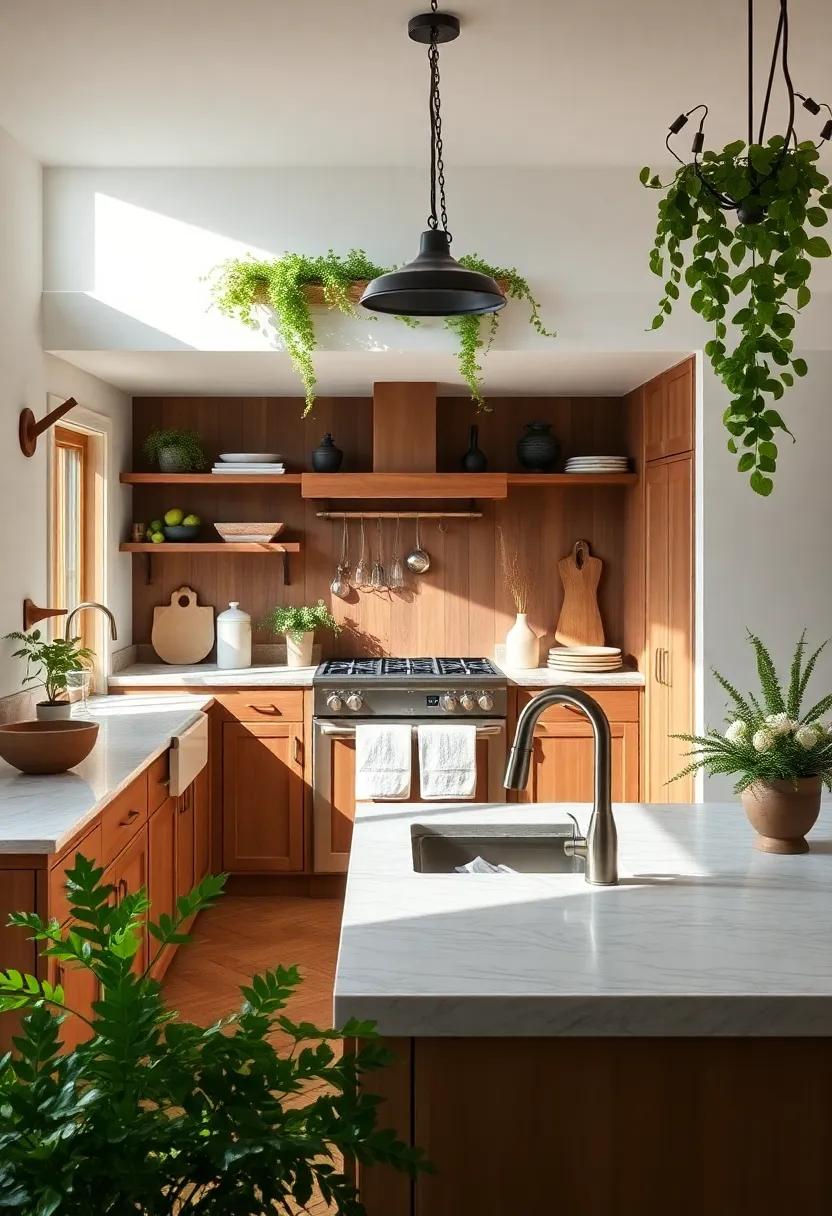
Water features introduce a soothing ambiance to your farmhouse kitchen, turning it into a serene retreat amidst nature. Consider incorporating elements such as indoor fountains or small fish ponds that can create a tranquil soundscape. The gentle trickle of water not only beautifies your space but also enhances the air quality, making your kitchen more inviting.Think about these ideas:
- Tabletop water fountains that fit comfortably on countertops
- Wall-mounted mini waterfalls to save space and add vertical interest
- Stone or pebble-lined bowls filled with water for a natural touch
For those who desire a more extensive water feature, consider a seasonal outdoor placement just outside kitchen windows, like small ponds or streams. This provides not only a focal point for the view but also the enchanting sounds of nature that can seep indoors. To further harmonize with the greenery, pairing water features with elements like rocks or plants can create a cohesive natural aesthetic. Here’s a fast overview of how different features can complement your kitchen:
| Water Feature Type | Benefits | Ideal Placement |
|---|---|---|
| Indoor Fountain | Creates calming sounds | Countertops or shelves |
| Fish Pond | Enhances serenity | Outside the kitchen window |
| Wall Waterfall | Saves space, adds visual interest | Kitchen walls |
| Decorative Bowl | natural aesthetics | Center of dining table |
Artistry of Succulents: Minimalist Green Design Choices
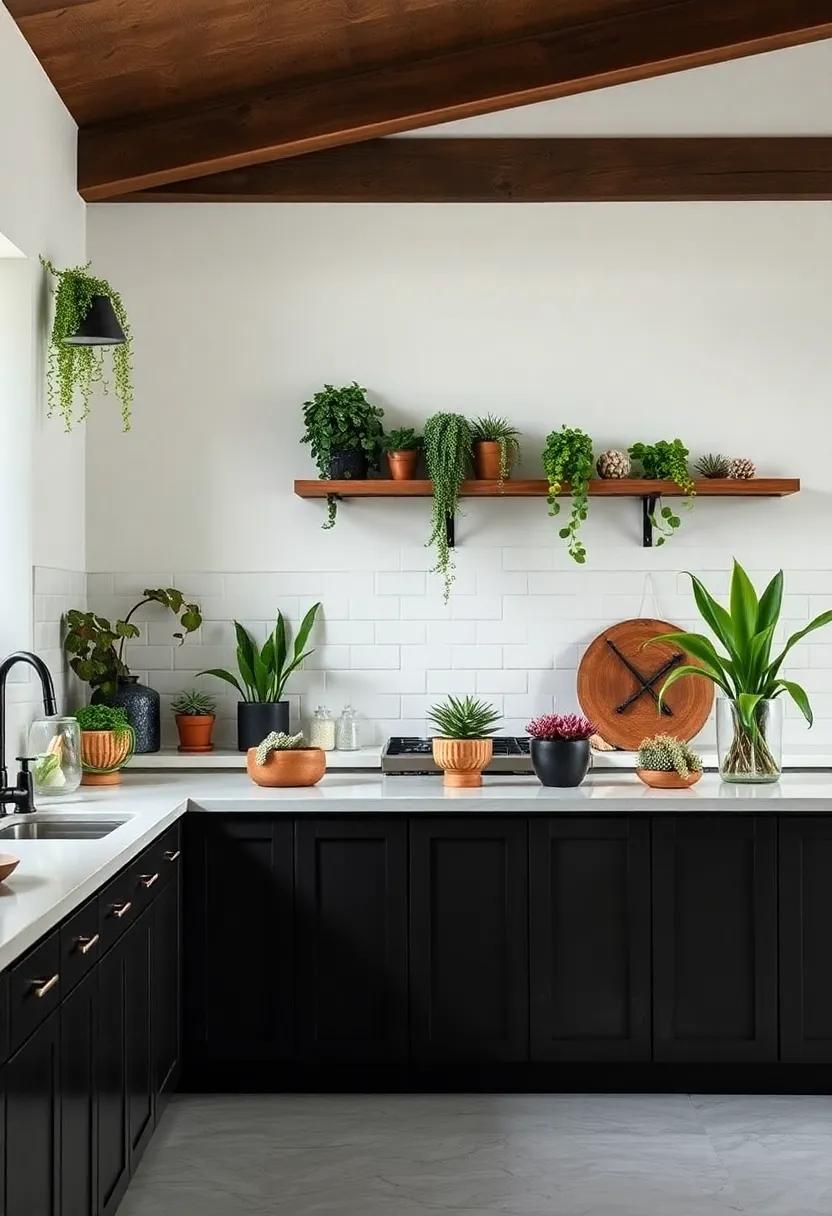
In the quest to infuse your kitchen with natural elegance, succulents stand out as the perfect choice for minimalistic green design. These resilient plants thrive with minimal care, making them ideal companions in a bustling farmhouse kitchen where practicality meets style.Opt for sleek planters in neutral tones—think matte ceramics or brushed metals—that allow the natural beauty of the succulents to take center stage. when arranging these mini marvels, consider various heights and textures to create captivating focal points.Placement options may include:
- Kitchen windowsills: Illuminate the lush greens with natural sunlight.
- Open shelving: Create a leafy vignette alongside your favorite cookbooks.
- Center island: Use a terrarium display to invite charming conversation with guests.
To maximize visual appeal, select a harmonious palette of succulents that play with shades of green, gray, and silver. Adding an occasional pop of color—through varieties like the vibrant Jade Plant or the eye-catching Flowering Stonecrop—can enhance the overall aesthetic without overwhelming the senses.Below is a simple chart summarizing some popular succulent options for your kitchen:
| Succulent Name | Light Requirements | Watering Needs |
|---|---|---|
| Jade Plant | Bright, indirect light | Every 2-3 weeks |
| Aloe Vera | Full sun | Every 3 weeks |
| Hens and Chicks | Full sun | Once a month |
Future Outlook
As we conclude our exploration of transforming your farmhouse kitchen into a vibrant oasis of greenery, it becomes clear that incorporating nature is more than just an aesthetic choice; it’s a celebration of life itself. The soft rustle of leaves,the vibrant hues of fresh herbs,and the earthy fragrance of potted plants can breathe new life into your culinary space,creating an atmosphere that nurtures creativity and connection.
Whether you opt for a cascading vine, a robust herb garden on your windowsill, or a striking statement plant, each addition is a step toward harmonizing your living environment with the natural world. Embracing greenery not only enhances the visual appeal of your kitchen but also fosters a sense of well-being, reminding us of the beauty found in simplicity and growth.
So,as you embark on this journey of integration,let the essence of nature inspire you to cook,create,and gather in a kitchen that truly reflects your love for the earth—one leaf,one plant,and one meal at a time. Happy decorating!
As an Amazon Associate I earn from qualifying purchases.
